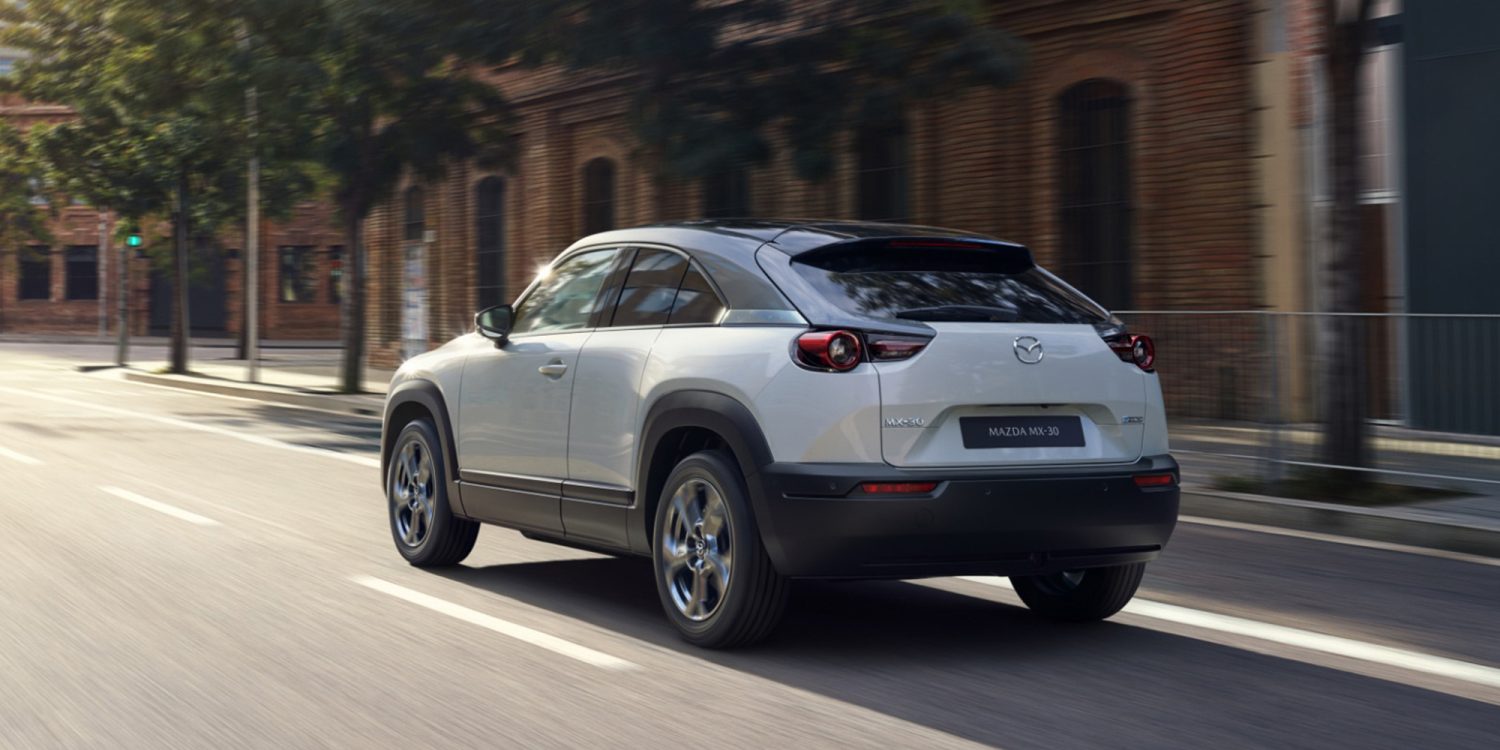Mazda plans to make ‘7 or 8’ electric car models by 2030


Slow-moving Mazda, which currently sells one electric car, the MX-30 (and in limited quantities), says it will finally wake from its long slumber and crank out a few more EVs, seven or eight models in fact, and sell them internationally by 2030. Here’s hoping that the promised electric Miata is part of the lineup.
Of course, no precise information – where, what, when – is available, but Mazda CEO Masahiro Moro shared the tidbit with Automotive News in an interview. Moro, who took the helm earlier this year, has been extremely vocal about his reluctance to embrace EVs, saying that they don’t sell unless they are from Tesla. Still, he does say that Mazda will start to make some effort, with the caveat that the Japanese automaker is an “intentional follower” rather than a leader in the sector and that the market is still too shaky to dive in headfirst.
“For us, the demand for electric models is too uncertain,” Moro told Automotive News. “The demand for electric cars is still growing too slowly. Right now, customers are still looking for alternatives that are not EVs.”
The company has indicated that it expects some 25 to 40% of its international sales to be electric vehicles by 2030 – which won’t meet EPA requirements. Still, to make that uninspiring goal happen, Mazda has launched a department to develop these new cars based on what will be a modular EV platform, expected to debut between 2025 and 2027. According to the report, the details of the platform are still being developed in response to evolving regulations and politics, with Moro adding that the financial unpredictability surrounding EVs could play a part in scaling up the platform.
The first step is to design and manufacture electric vehicles for Japan, from 2025 to 2027, and then launch them potentially in North America next, from 2028. By 2030, Mazda aims to have seven or eight BEVs sold globally.
Moro adds that the company will work with its partner, the behemoth Toyota, on software and electrical infrastructures, with the mission to create smart, “socially connected battery EVs,” with software crucial to that process. As much as 90% of the software will be based on Toyota’s, including the hardware and operating systems.
“It’s much more efficient because the software is going to be the base for many products going forward,” Moro told Automotive News of the partnership with Toyota. “There are many things an individual company can’t do alone.”
City Dwellers’s Take
Earlier this year, Mazda announced an “electrified” Miata was in the works for 2026, but it didn’t specify whether it would be fully electric, hybrid, or plug-in hybrid. So, if it could capture that Miata magic in an electric version – a fun-driving, agile, sporty car that looks a lot more expensive than it is – that would be a sure thing. But, it’s hard to feel real optimism from Mazda, from the looks of the MX-30, which got pulled from the US after selling only a few dozen units. Mazda, along with other Japanese automakers, is, of course, way behind the curve here.
Moro did, however, hint that Mazda will stick to what it arguably does best, designing a small, lightweight EV and keeping costs pared down. Still, the company is banking on the popularity of its bestselling ICE CX-50 and CX-90 SUVs to bring it a record year in profit in the US, selling 389,000 vehicles in the US, a 22% bump from last year. It hasn’t broken this record since 1986. It has recently debuted PHEV versions of both models for 2024, but we’ve still nary a fully electric version in sight.
FTC: We use income earning auto affiliate links. More.